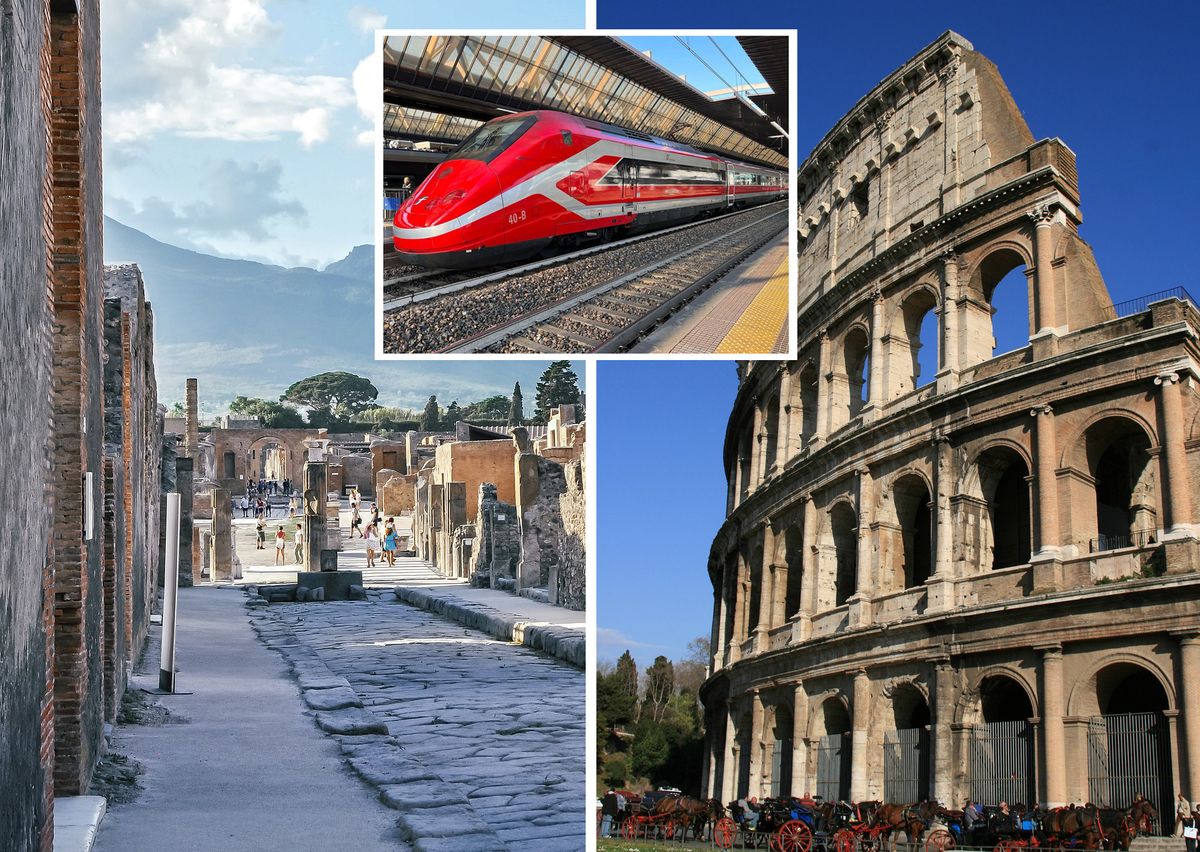Italy plans to open a high-speed rail connection between Rome and the ancient city of Pompeii, in a bid to ramp up tourism to the archaeological site and other locations along one of Italy's most beautiful stretches of coast.
The €35m development foresees the creation of a new train station and transport hub adjacent to the Pompeii archaeological site, the former ancient city that was preserved in a volcanic eruption in 79AD and last year was visited by nearly three million people in 2022, compared with seven million at the Colosseum and four million at the Uffizi. The hub will form a new stop on the existing high-speed train line connecting Rome to Naples and Salerno, allowing visitors to reach Pompeii directly from the Italian capital and Rome’s Fiumicino Airport.
"We will take tourists directly from Rome to Pompeii. [This will be] a cultural asset for Italy and for culture," the culture minister Gennaro Sangiuliano said last week on Italy's flagship talk show Che Tempo Che Fa. "I know the term 'culture industry' makes some people squirm, but culture can be a great opportunity for the civic and economic development of Italy."
The minister also said work on the hub would begin imminently and that the new station would open by the start of 2024.
The quickest route from Rome to Pompeii currently involves changing trains in Naples and taking a slow regional service that stops in a dozen coastal towns along the Gulf of Naples—a 250km journey that takes nearly two hours to complete—while the new connection will bypass part of the coastal stretch.
The hub will also connect visitors to the Villa Dei Misteri stop of the Circumvesuviana railway network, which runs trains to archaeological sites Ercolano, Oplontis and Stabiae.
The development forms part of the Great Pompeii Project, an EU-funded initiative launched in 2012 initially to secure the crumbling site. It could result in visitor numbers to Pompeii doubling from the current figure of roughly 20,000 a day, Naples newspaper Il Mattino estimates.
Some tourism professionals have celebrated the move, claiming it will better connect Naples and the picturesque Sorrento Peninsula. "Finally, it will be possible to bypass the real obstacle today: that is, having to travel through tens of towns in the most densely populated area in Europe," wrote Sergio Fedele, the president of the Atex Campania tourism association, in a press statement. Others have argued that Sorrento will lose out. "These visitors will find it more convenient to travel directly to and from Pompeii [...] rather than staying the night on the peninsula," Gaetano Milano, the ex-managing director of Fondazione Sorrento, a heritage promotion organisation, writes in Positano News. "I fear that when we wake up to this it will be too late."


